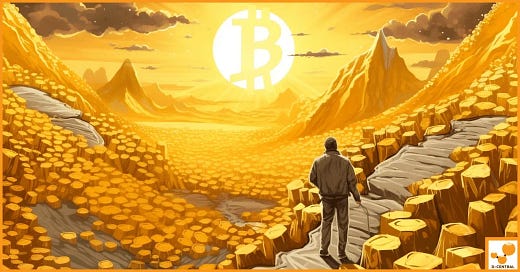The Financial Iron Curtain: A Deep Dive into Chris Martenson and Vince Lanci’s Discussion on Gold, Trust, and Global Markets
The financial landscape is undergoing a tectonic shift, one that few are openly discussing. In a riveting conversation on Peak Prosperity, host Chris Martenson and guest Vince Lanci dissected the implications of a growing crisis in global trust, monetary policy, and gold markets. Their discussion traversed topics ranging from the shifting role of U.S. Treasury bonds to the re-emergence of gold as a safe-haven asset, all set against the backdrop of increasing geopolitical tensions.
This article provides an in-depth breakdown of their insights, structuring key points into analytical sections while preserving the original context of their discussion.
1. The Crisis of Trust in Global Finance
Breaking Down Counterparty Risk
At the heart of the discussion was the growing distrust between financial institutions, nations, and counterparties. Vince Lanci likened the current situation to the Lehman Brothers collapse, where banks lost confidence in each other’s solvency, refusing to do business with institutions they deemed risky.
"I don't trust you as a counterparty. I don't want to take Lehman's paper. I'm Goldman Sachs, I don't want to do business with Lehman because they might go under. Well, that's what's happening in the world right now."
This breakdown of trust is not confined to banks—entire nations are reconsidering their reliance on the U.S. dollar and U.S. Treasury bonds. The confiscation of Russia’s dollar reserves following the Ukraine invasion sent shockwaves through international finance, leading countries like China to reassess their holdings in U.S. assets.
Analysis: The Erosion of Dollar Dominance
Lanci and Martenson argue that this loss of trust is a critical factor in the current financial instability. Historically, the U.S. dollar has been a pillar of global finance, but recent geopolitical moves have made foreign holders of U.S. debt uneasy. If key players like China, Japan, and Europe reduce their holdings of U.S. Treasuries, America will be forced to finance its own debt—a reality that could have serious implications for interest rates and economic stability.
2. Janet Yellen’s Dilemma: Funding America’s Debt Crisis
A Liquidity Shortage in Treasuries
Martenson and Lanci highlighted a significant issue: the U.S. Treasury is running out of liquidity tools. For years, the Treasury used $2.5 trillion in reverse repo liquidity to fund government spending, but this reserve is now nearly depleted.
"Who's going to buy the treasuries? Janet Yellen, in her infinite wisdom, left us with a $9.5 trillion refinancing problem. It just has to be rolled over, which means we need a functioning liquidity system to do this."
With traditional foreign buyers stepping away, the U.S. government may have to offer higher interest rates to attract domestic investors, which could place immense pressure on the economy.
Analysis: A Deficit Spiral with No Easy Fix
The U.S. is facing an unsustainable fiscal trajectory. If demand for Treasuries remains weak, the government will be forced to either:
Raise interest rates to attract buyers, further straining economic growth.
Cut spending, which could lead to economic contraction and social unrest.
Find alternative ways to collateralize debt, potentially leading to experimental policies involving digital assets.
Lanci hinted at a potential alternative: using U.S. bonds as collateral for Bitcoin purchases, a move that could reshape the financial landscape.
3. The Rise of Gold in a Trustless World
Why Gold Is Surging
Gold’s meteoric rise has not gone unnoticed. Lanci and Martenson discussed how gold prices have quietly hit all-time highs with minimal media coverage, a stark contrast to previous gold bull markets.
"This is the quietest all-time new high in gold I’ve ever seen. No one’s talking about it. No one's slam dunking it."
The reason? Governments and central banks are actively buying gold while simultaneously discouraging retail investors from following suit.
Analysis: The Financial Iron Curtain and Gold’s Role
Lanci introduced the concept of a “Financial Iron Curtain”, suggesting that global trade is shifting towards gold-based transactions rather than dollar settlements.
"The only way I’ll be able to buy your stuff in China is if I have gold to transact with. They don’t want dollars."
If this trend continues, gold could reclaim its role as the ultimate global reserve asset, diminishing the power of the U.S. dollar in international trade.
4. Market Manipulation and Media Suppression
Controlling the Narrative
Martenson and Lanci noted that mainstream media and government institutions actively downplay the significance of gold, shaping narratives to suppress enthusiasm.
"The press can’t turn around and say ‘gold is great’—that plays into Trump, that plays into inflation, that plays into all the boogeymen."
Instead, news outlets focus on downplaying gold’s value, framing its rising price as a side effect of other economic factors rather than a fundamental shift in the financial system.
Analysis: The End of an Era for Paper Assets?
If gold is reasserting itself as a critical financial asset, it challenges the entire fiat-based monetary system. This could mark the beginning of a paradigm shift away from debt-based economies toward asset-backed financial structures.
5. The Future: Where Do We Go From Here?
Three Possible Outcomes
Lanci outlined three potential scenarios for the future of the global financial system:
The U.S. dramatically cuts spending, leading to lower deficits but also lower living standards.
A new major buyer for U.S. debt emerges, potentially through digital asset integration or alternative financial structures.
The financial system continues its shift towards hard assets, with gold and Bitcoin absorbing liquidity traditionally held in government bonds.
Final Thoughts: A World in Transition
The discussion between Martenson and Lanci makes one thing clear: we are in the midst of a major financial transition. The traditional debt-financed system is becoming increasingly unstable, and global trust is deteriorating. As a result, investors and nations alike are seeking refuge in gold, hard assets, and alternative stores of value.
Martenson’s final words serve as a warning to those who remain complacent:
"Everybody needs to have some hard assets and an exposure to gold and silver. Pick the percentage that makes sense to you, but if you don’t have any—good luck."
In an era of increasing financial uncertainty, the real question is no longer whether change is coming—but whether individuals and institutions are prepared for it.
Key Takeaways
✔ Trust in the global financial system is breaking down, leading to uncertainty in Treasury markets.
✔ Janet Yellen’s policies have left the U.S. in a precarious liquidity position, with fewer buyers for its growing debt.
✔ Gold is quietly becoming the asset of last resort as nations move away from the dollar.
✔ Media and government narratives actively suppress enthusiasm for gold while institutions quietly accumulate it.
✔ The financial system is undergoing a transformation, and those who fail to adapt may be left behind.
As Vince Lanci and Chris Martenson made clear, this is a moment to pay close attention. The global economy is changing in ways that few anticipated, and those who fail to see the signs may find themselves caught in the storm.









